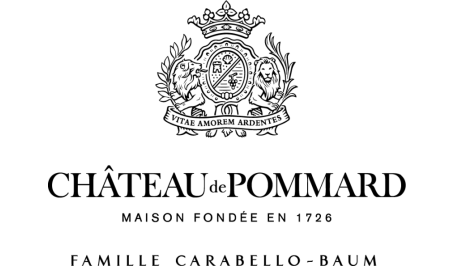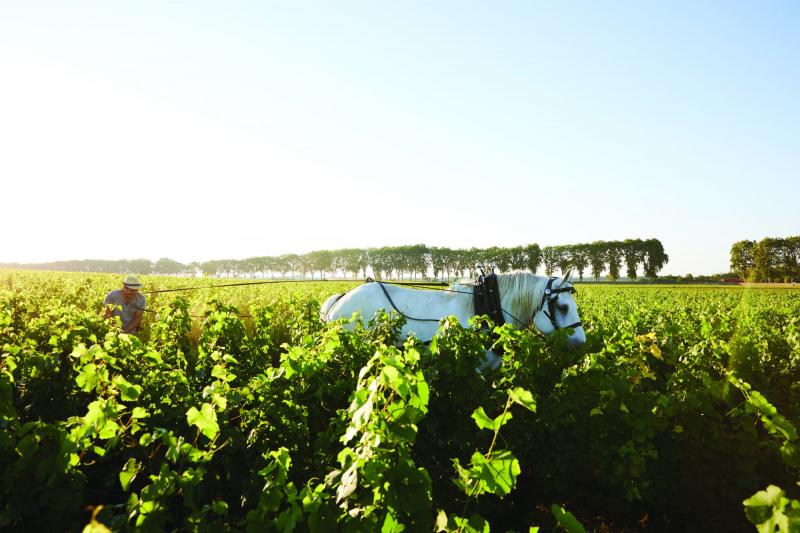- Search
- The Washington Chapter
- Membership
- FACC Services
- Careers
- Events
My New Year’s Resolution
Chapter News | January 22, 2020
A monthly feature about wine Sponsored by Chateau de Pommard
Connect with them by email or on their website!
My New Year’s Resolution
My New Year’s resolution was to drink more wine. But not just any wine. In 2020, I am choosing to focus my attention on biodynamic wines in 2020. For my body and the planet, I try to buy organic vegetables when I can, take public transportation in lieu of driving and to take the train instead of flying when possible. But what is wine’s impact on our planet, those who drink it and on those that make it?
At Château de Pommard, we began our journey into organic and biodynamic viticulture shortly after the purchase of the estate by Michael Baum in 2014. For Mr. Baum and our winemaker Emmanuel Sala, it was an obvious choice to harness the power of nature in our special corner of Burgundy through biodynamic winemaking. The goal was to create delicious wines while being respectful to the soil and those involved in the process. A way of doing this was by converting our vineyards to organic and biodynamic methods.
What exactly is biodynamic wine and how is it made? Biodynamic agriculture has its origins in the 1920’s in Europe, based on the teachings of Austrian philosopher Rudolf Steiner. Steiner was actually teetotal himself, but his methods of sustainable agriculture that see farms and vineyards as a holistic and self-sustaining organism were soon applied to viticulture with excellent results. The number of biodynamic vineyards in the world, with France largely leading the way, has tripled in the last ten years.
This spiritual, ethical and ecological approach to vineyard management and winemaking takes things a step above and beyond organic certification. Biodynamic wine estates not only eschew the use of fertilizers and herbicides as organic wines do, they also follow additional sets of practices that focus on the vineyard’s ecosystem itself. Minimal intervention in the winemaking process is also generally observed.
One of the practices of biodynamics that is easy to spot in Burgundy is the use of horse and plow for vineyard work. At Château de Pommard we also choose this ancient method of tilling the soil in order to encourage biodiversity. Ladybugs, weeds, worms and wildflowers all thrive in unison in our vineyards because firstly there are no chemicals used to eradicate them nor any tractors to compact the soil. Heavy machinery can kill the precious subterranean activity of microorganisms that keep the soil alive. Having healthy soil that is bursting with natural nutrients allows the grapevines to use activate their natural self-defense against disease.
Our vines therefore naturally vie for water and nutrients with the natural cover crops found between the rows, forcing their roots down further into the subsoil, therefore enhancing the flavor and texture of the wines. In the case where attack of disease, pests or inclement weather may be imminent in the vineyard, a series of herbal preparations can be applied as a protection. Along with the use of manure, think of these tisanes as a way of preventing the disease in the first place not as a remedy.
Another tenant of biodynamics is the use of the lunar calendar to dictate various activities in the vineyard. While the power of the moon at various points in its cycle can be observed on the tides and our bodies, we do not yet fully understand its effects on the earth. However, it is generally believed that the position of the moon, stars and planets has an effect on vineyards and the wines made from their vines. This reminds me of how my grandmother religiously followed the Farmers Almanac when tending to her garden in the pre-internet days. In hindsight, I now see the way she was growing the food she put on her family’s table was no different than what many of the top farmers and winemakers are attempting to achieve through biodynamics: diversity, purity, quality, minimal intervention and heightened nutrition.
Biodynamics can be summed up concisely: in having healthy and diverse soils in the vineyard, we seek harmony between the earth and the plant itself, allowing the vine to thrive in the best conditions while coaxing out the maximum quality in the grapes to make exceptional wines. The better the whole system works in unison, the healthier the vine, resulting in better wine.
The difference between a conventionally made wine and one made biodynamically can be difficult to prove even in the laboratory. However, most sommeliers, wine experts and consumers agree that a certain purity and a profound expression of terroir, can be recognized when tasting biodynamic wines.
Your homework for 2020 is easy: go and try them for yourself! Paris-based Preston Mohr is the Private Client Sales Manager (USA East) for the Château de Pommard. If you’re interested in learning more about Château de Pommard or biodynamic wines, please contact him at preston@chateaudepommard.com .


